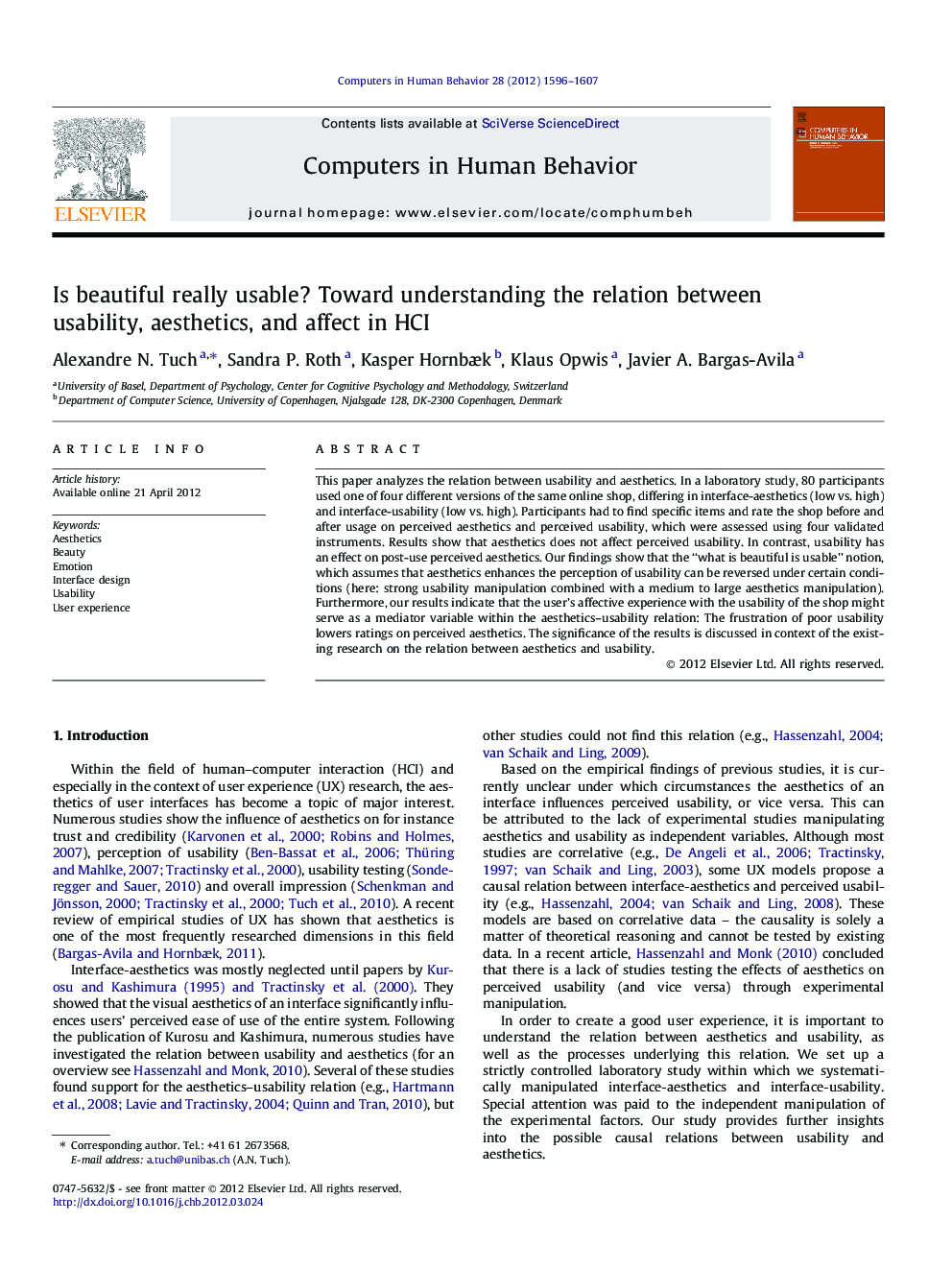| Article ID | Journal | Published Year | Pages | File Type |
|---|---|---|---|---|
| 351102 | Computers in Human Behavior | 2012 | 12 Pages |
This paper analyzes the relation between usability and aesthetics. In a laboratory study, 80 participants used one of four different versions of the same online shop, differing in interface-aesthetics (low vs. high) and interface-usability (low vs. high). Participants had to find specific items and rate the shop before and after usage on perceived aesthetics and perceived usability, which were assessed using four validated instruments. Results show that aesthetics does not affect perceived usability. In contrast, usability has an effect on post-use perceived aesthetics. Our findings show that the “what is beautiful is usable” notion, which assumes that aesthetics enhances the perception of usability can be reversed under certain conditions (here: strong usability manipulation combined with a medium to large aesthetics manipulation). Furthermore, our results indicate that the user’s affective experience with the usability of the shop might serve as a mediator variable within the aesthetics–usability relation: The frustration of poor usability lowers ratings on perceived aesthetics. The significance of the results is discussed in context of the existing research on the relation between aesthetics and usability.
► This study analyzes the relation between usability and aesthetics within websites. ► Results show that good usability enhances the perception of classical aesthetics. ► The effect of usability on aesthetics is mediated by user’s affective response. ► The frustration of poor usability lowers ratings on perceived aesthetics. ► Usability is manipulated via information architecture without changing page layout.
